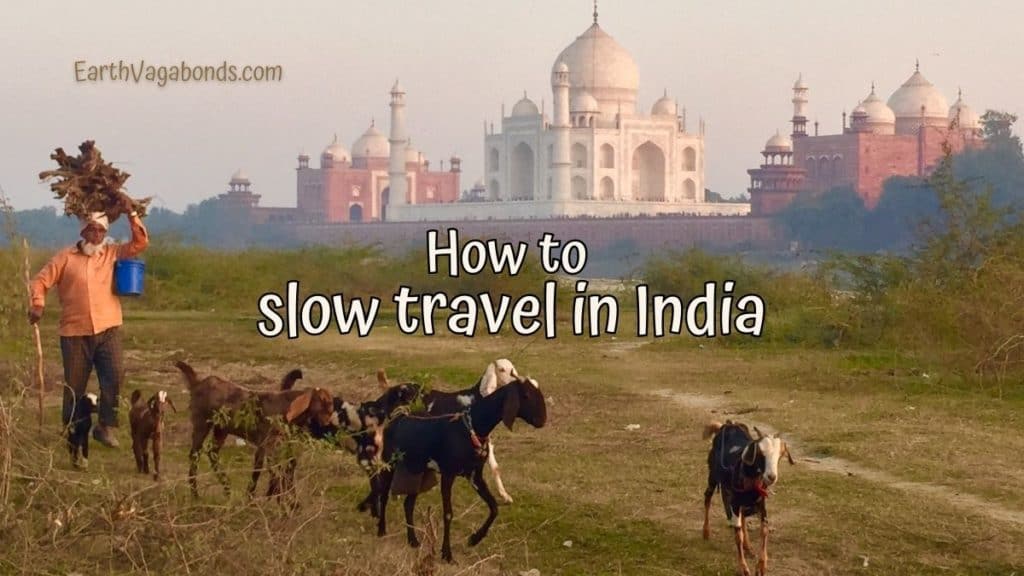
This guide is about how to slow travel in India — today’s India, the most populated country on Earth. It will help you plan your own authentic adventure without travel agents. We feel qualified to call ourselves experts on slow travel in India because spent 14 months all over the country in the years 2022, 2023, and 2024. This guide will help you navigate this often overwhelming country.
Husband Theo says of India, “It is the most foreign-feeling place I’ve ever been.” And we’ve been to a lot of places!
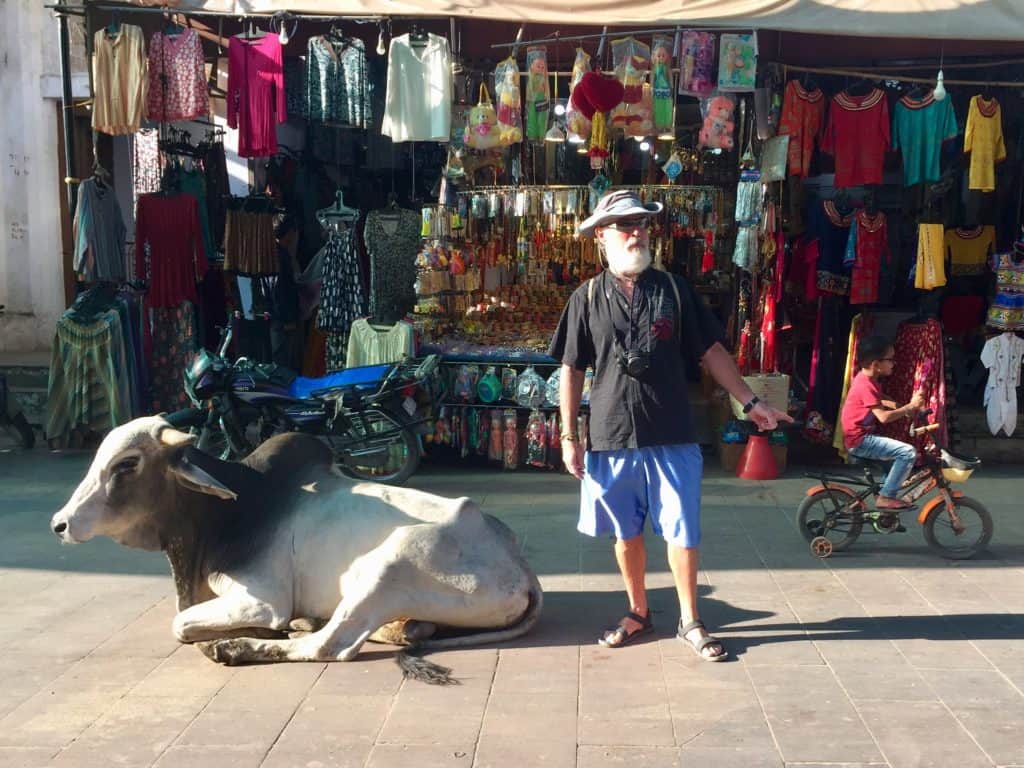
How to slow travel in India for adventurers
Introduction: Slow travel in India
India is a place of extreme poverty, extreme wealth, and a huge middle class in between. India is a relatively young democracy with political power plays that its people must navigate – just like us Americans.
Indians are young. The median age is 28 years old in a country with 1.4 billion people.
Every religion on the planet is found in India. There are many national and religious holidays. The majority of people are Hindu. In Hinduism, cows represent Mother Earth and are considered holy and therefore they are free to roam everywhere, roadways included. In mega-cities like Delhi and Mumbai, you might see a cow tied up, but that is likely for the cows’ safety, not necessarily yours. Modest dress is required in temples; shoes must be removed.
Many Indian women don’t show their elbows or knees, but they do show their bellies in some traditional wear. However, in mega cities, young women wear Western-style clothing, including shorts, tanks and skirts over the knee. Menswear also varies from modern to traditional. Men often wear long-sleeved, button-down collared shirts, even laborers.
Every day, 422 people die in vehicle crashes in India! A sad fact. Most often the cause is speeding, according to India’s Ministry of Roads and Highways.
These facts will impact your slow travel in India.
Visitors will:
- marvel at how crowded every place is
- see proud political party members rally with flags on motorcycles
- watch Hindus revere idols of gods
- never get used to all the cows in the most odd places
- get tired of horns in traffic
- witness insane traffic issues
- be approached by countless Indians to take selfies
- encounter more beggars than you ever thought possible
And that’s just the beginning!
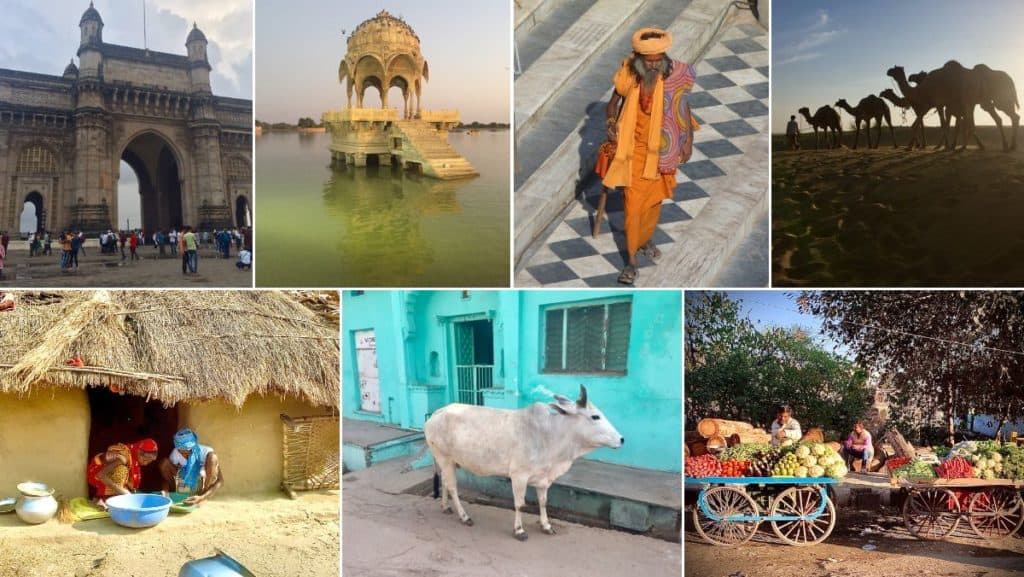
A few more standout points follow. These will help you better understand certain elements that are later covered in this detailed guide.
Positives for slow travelers (no particular order):
- incredible history and culture
- the wonderful hospitality we were shown at every single one our 20 Airbnb and booking.com rentals, and hotels
- the absolute best vegetarian food on the planet
- diversity of Indians
- kindness of strangers (including invitations into homes for meals 🥰)
- unbelievably low prices on nearly everything (except housing because there are so many people)
- efficient train travel across the country
- yoga and vipassana centers aplenty
- generous e-tourist visa allowance for Americans (even with the rule change in 2023)
- every state is different (just like in America)
Not-so-positive standouts:
- so many people (!)
- constant traffic jams everywhere with everyone blaring their horns
- the inability of people to form proper queues
- people pushing up against me when there is a queue
- more beggars than I’ve ever seen anywhere on the planet — including street kids
- cow dung on virtually every street in the country
- rising cases of mosquito-borne illnesses (Theo was really, really sick with dengue)
- oppressive heat before a changing monsoon season
- frequent power outages in every location we visited (except Mumbai & Delhi)
- the need to buy train tickets months in advance because of so many people…
Experts at budget slow travel in India
We spent 11 unforgettable months in our early retirement all over this incredible country between 2022 and 2024 on a five-year e-tourist visa. And we plan to spend even more time in Mother India!
Even though we have not yet visited every state, we feel the extensive travel around the country justifies calling ourselves experts on budget slow travel in India.
Our monthly budget was $2,000 for two people. We were extremely comfortable on that amount. Your budget might be higher. This guide can still be a useful reference.
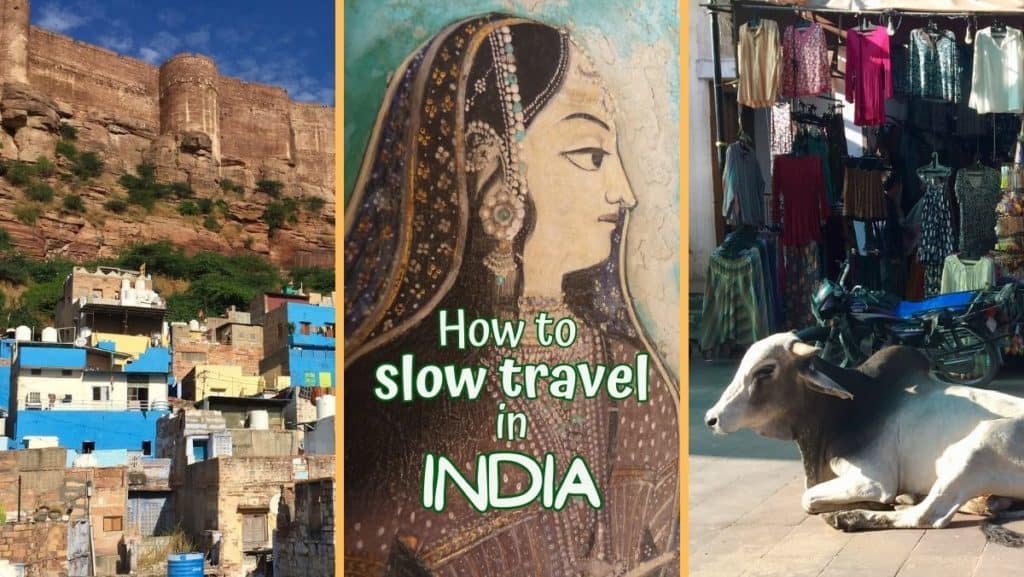
How to slow travel in India
e-Tourist visas
India has an extensive visa application. Read everything on the official site (linked below) more than once. Ambiguity is common, but some of it becomes clear if you keep reading.
Payment is tricky. The official Indian site does not always accept foreign credit cards – with no explanation.
This is a common issue in India: foreign cards are often denied for immigration payments (and also for online train tickets). Paypal is an option for e-tourist visa payments.
The visa clock starts running once you are approved.
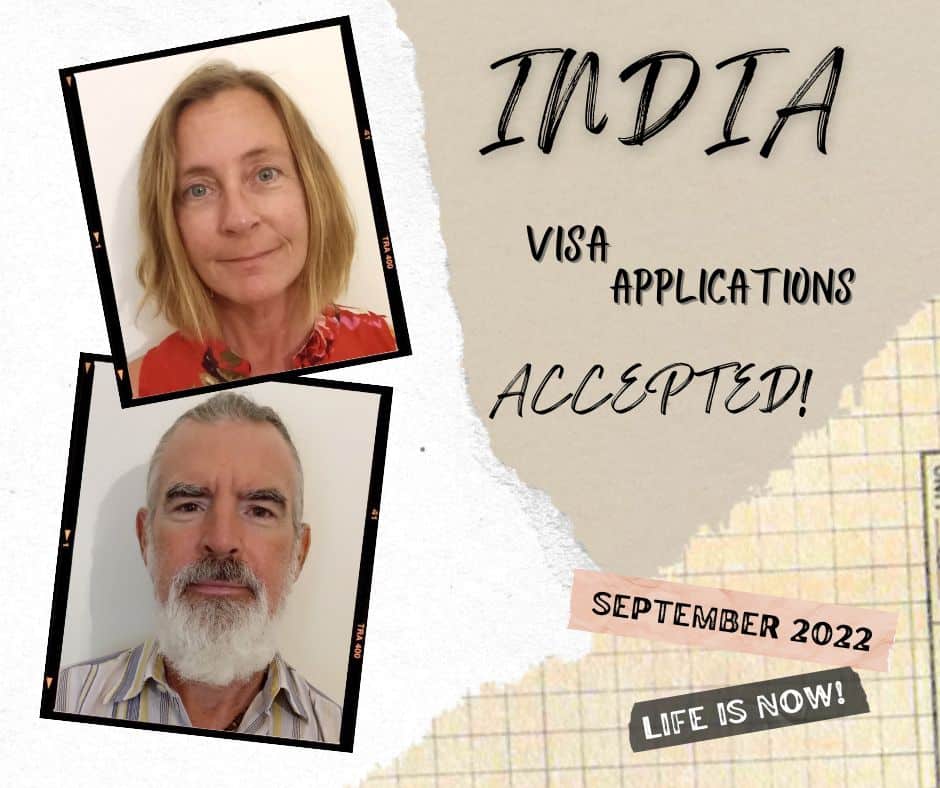
E-tourist visa holders must enter and re-enter at official airports or seaports listed on the official website. It is OK to leave by land border crossings.
Other types of visas have different rules entry and exit rules, such as work and volunteer visas.
2023 rule change
In 2023, India changed the length of stay limit for American e-tourist visa holders. These visa holders can only stay 180 days per calendar year — regardless of when the e-tourist visa was issued.
This is a huge change. Previously, you could exit and then and re-enter with the timer reset to another 180 days in the same calendar year.
Why this change? No idea. There was no explanation on the official site, and not a single news report about it. Some slow travelers in Facebook groups lamented their need to change plans for slow travel in India because of this rule change.
Therefore, we recommend you periodically check the immigration rules on the official site if you plan to be in India for months at a time.
*Only use the official government website!
Use the official website for Indian e-tourist visas. Nowhere else!
There are many ‘services’ that look official but they’re not, and there are horror stories about many of them.
Even the official government site warns people not to use outside private sites for visa approvals.
Money matters for slow travel in India
Cash is king for tourists and travelers, although digital payments are opening up to foreigners. And you’ve already learned foreign credit cards hardly work for things like immigration and transportation plans.
First let’s cover cash issues.
ATMs, banks
Many ATM machines in cities frequently run out of cash. Additionally, withdrawals were limited to 10,000 rupees (roughly $121 as of May 30, 2023) per transaction. A few machines supposedly allow 20,000 rupee withdrawals, but we never found one.
This relatively low amount can be a challenge if you are somewhere like Rishikesh that has limited machines that frequently run out of money. Don’t run too low on cash – and don’t wait until a weekend to make a withdrawal!
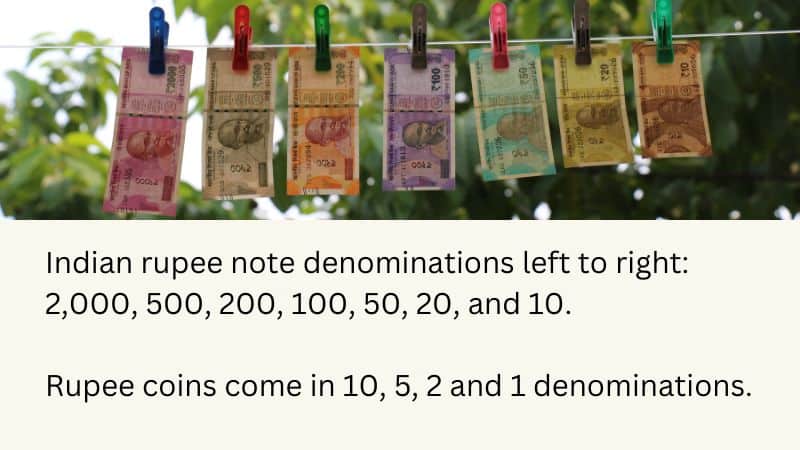
When you do get money at a bank ATM (try to only use bank ATMs in any foreign country), go inside the bank at the cash counter to get change. The reason: ATMs usually dispense only 500 rupee notes, and most rickshaw drivers and small vendors cannot make change.
The 2,000 rupee notes are rare, though still in circulation. These notes are no longer printed, and are gradually being phased out.
Digital payments
Indian pay services by app are popular. Economists predict 70 percent of all payments in India will be digital by 2026.
Small businesses from mom-and-pop convenience stores to small chai (tea) stands take digital payments.
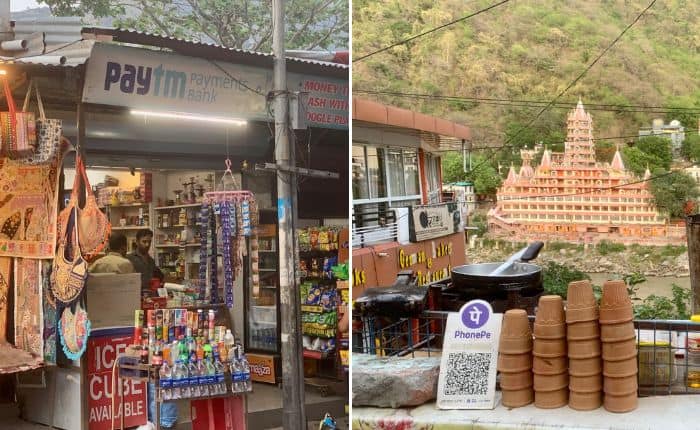
In February 2023, digital payment options were opened up to foreigners. With India’s G20 presidency, this change was designed to make it easier for foreign delegates headed to different parts of the country throughout the year.
As foreign slow traveler in India on a tourist visa, you need an international phone number linked to a bank account in your home country to use certain payment apps. As of March 2024, only a few apps take foreign payments.
Also, this won’t work for people who change SIM cards in every country, like us.
Note: we inquired about opening an Indian bank account, but it’s not possible on an e-tourist visa.
Western Union
A couple of times we needed larger sums of cash for medical needs, several advance purchases of train tickets or excursions. Instead of using an ATM repeatedly, we sent ourselves larger sums of money via Western Union.
We used Muthoot Finance (with the red signs, not the blue!) to cash out our Western Union transactions. These are found all over the country.
If you go this route, note it might take a few hours on your first processing. Your e-tourist visa and passport photo will be required.
SIM cards
There are several phone companies: Vodafone, Airtel, Jio, and BSNL. Each company has various prices, plans, and coverage area capabilities.
Mega-city airports have service stands for these companies, but they are not always open. Therefore, you might need to get a card outside the airport.
Our suggestions:
- Take your time to review plans in an official store
- Determine where your slow travel will take you in India and look at company coverage maps
- Buy PRE-paid cards, not post-paid (less headaches disengaging the company once you leave the country)
Bring an e-tourist visa copy, and a passport (or copy) to the phone store. It might take a day to get your SIM card, so stay flexible and patient.
Train trips
One of the best things about slow travel in India is the country’s train system. It’s also one of the worst things — there are so many people that you have to buy tickets months in advance.
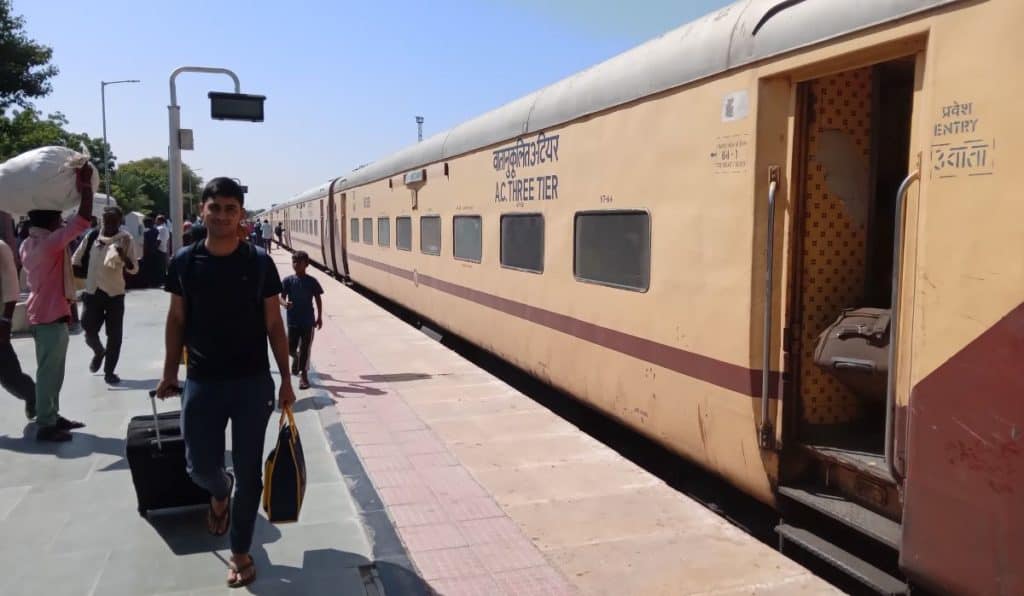
Buying tickets at station counter
It’s supposedly possible to buy train tickets through the app, but here again: foreign cards probably won’t be accepted.
One option is to head to a train station to buy tickets at the window.
First, use train apps (we used ‘Train Man’) to determine routes, dates, and prices, before you get to the ticket window. Not all clerks are fluent in English.
Next, get a form at the station. Fill out the form with your trip info.
It will save you time if you buy tickets for all or most of your travel in India during one visit to a ticket window. But expect to be pushed around as people get impatient when you spend a lot of time at the window.
Beware of chaotic lines! Even in lines marked for ‘tourists’ or ‘women’ or ‘seniors’, people will push and shove and breathe down your neck. If you stand in a straight queue, you will never get to the front because people cut the line and stand to the sides of the person being helped, ready to jump in before you.
I’m second in line below, but the man in yellow is nudging me aside and literally breathing all over me. Theo thought it was funny.
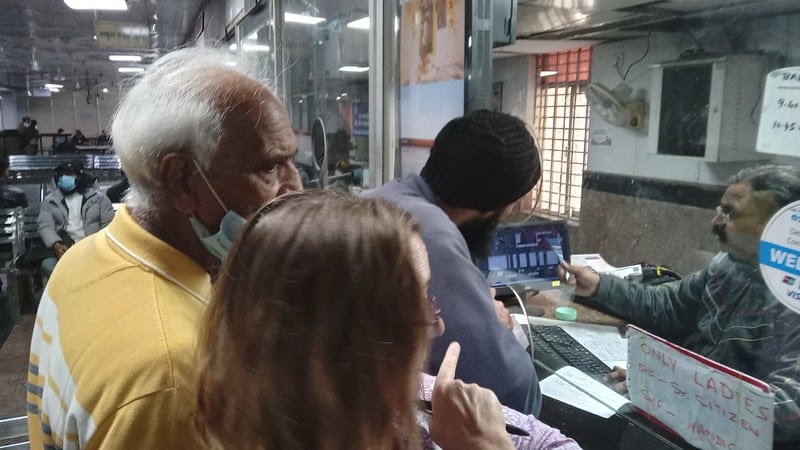
You cannot buy tickets when clerks take their lunch break.
The more people in your party, the trickier it is to get seats together.
Another option is to use a travel agent.
We used one twice: once before we arrived in India and could not get to a ticket window, and once in Rishikesh when it was a hassle to get to a station.
Tourist quota
The ‘tourist quota’ option is a good one if you want tickets on a main route, such as New Delhi to Agra, that’s already ‘sold out’.
They set aside a certain number of tickets for tourists on main routes. Sometimes when a train ride is ‘sold out’, these tourist tickets are still available. They do this because they know most travelers will not be able to buy tickets weeks and months in advance.
For this tourist quota option, you need to either:
- be at a station counter with your passport — not a copy
- or use a travel agent who then takes your passport to the counter for you.
If something isn’t available, either take a bus or alter your plans. If you are doing slow travel in India, that means you have the luxury of time, and you don’t need to rush around like tourists on strict timetables.
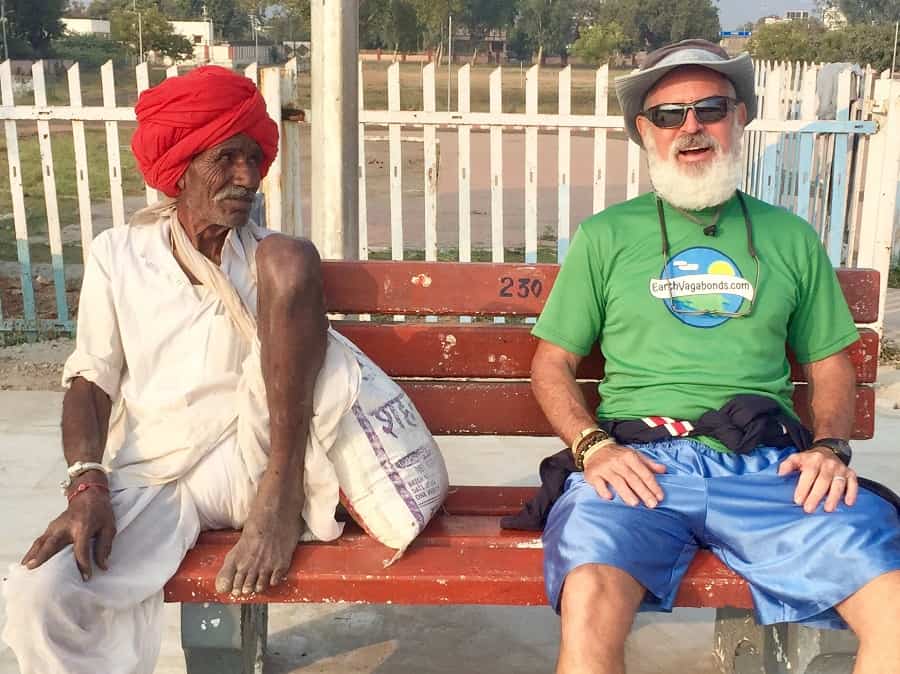
Train ticket overview & cost examples
These prices are for the ‘medium’ class of travel in 3A, which is an air-conditioned car (A) with three-person berths (3). You can get better seats – air-conditioned two-person berths (2A), or private rooms.
Air-conditioned cars without berths and simple seating is an option, too, especially if you are not on an overnight train. These cars have roomy seats, and are more comfortable for sitting than berth benches.
We never used the infamous ‘general seating’ cars, except for one short trip that lasted about an hour from Bundi to Kota. It wasn’t crowded, and it was like a general seating on a commuter train.
- Agra to Chennai: 5,800 rupees for two people ($70.56 total); 30+ hour trip
- Jaisalmer to Jaipur: 2,600 rupees for two people ($31.65); long overnight journey
- Bodhgaya to Delhi: 4,400 rupees for two people ($53.53); medium journey*
- Kolkata to Varanasi: 2,200 rupees for two people ($26.76); medium journey
- Kota to Agra: 1,400 rupees for two people ($17 total); short trip
- Goa to Bangalore: 2,000 rupees for two people ($24 total); 13-hour overnight trip
- Bangalore to Puducherry: 1,500 rupees for two people ($16 total); 11-hour overnight trip – the Puducherry Express only runs once a week
*We are not sure why Bodhgaya to Delhi was double the price compared to the other medium journey shown in our example list – from Kolkata to Varanasi. Perhaps because it’s not as popular a route, or perhaps because we bought it weeks – not months – closer to the travel date (we were lucky to even get seats!).
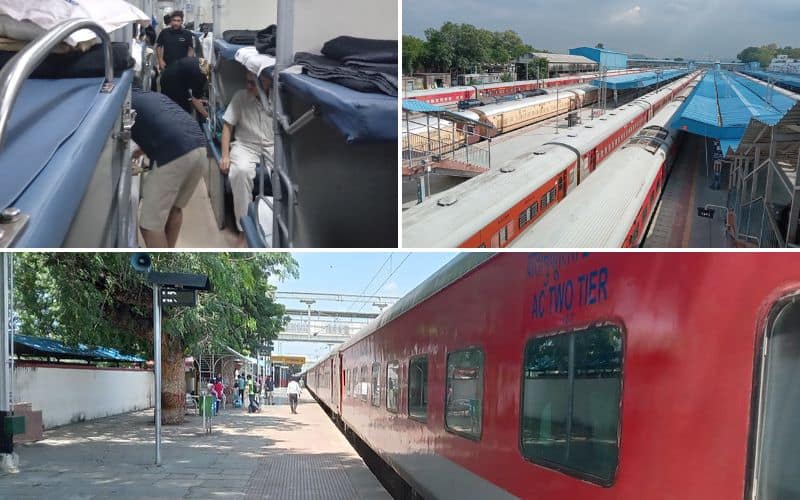
For more pictures inside the train cars (including bathrooms), visit our post on train travel for slow travel in India.
For further breakdown on the type of seats, cars, plus all methods and best times to buy tickets, see a train article at Soul Travel India. The woman who runs that site has years of experience traveling in India, though she mostly helps short-term tourists, not long-term slow travelers.
Subways and metros
India’s mega cities have commuter trains, metros and subways.
The lines for tickets in mega cities like Mumbai and Delhi are intense. If you are a couple, utilize the ‘ladies only’ line. (Note: even ladies shove, push, nudge on lines.)
Security lines can be tortuous. Especially the long men’s lines. Expect chaos at the security machines.
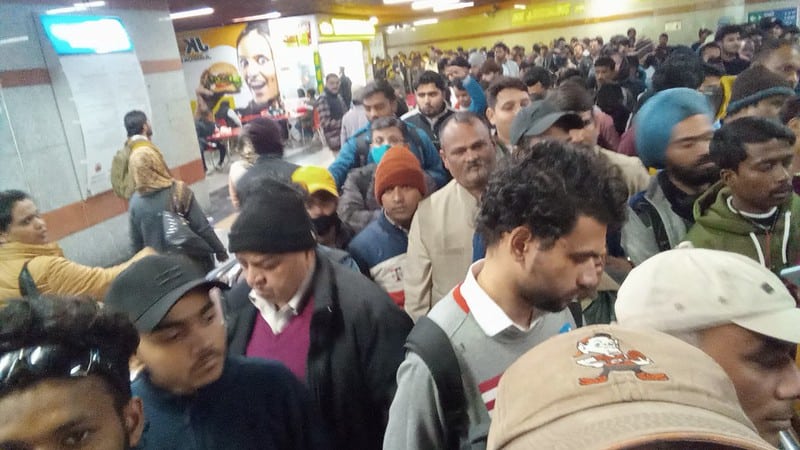
Despite the overcrowding, subways and metros are an efficient and cheap way to get around Indian cities. Several new rail lines are being worked on in various cities, as India’s population demands more infrastructure.
Long distance bus travel
Sometimes it makes more sense to travel long-distance by bus. Also, it’s not always possible to get train tickets.
In these cases, air conditioned buses are comparable to buses in other countries all over Earth. They are readily available.
Some buses push online payments for tickets – but that’s not always possible with foreign cards. So go to the bus station early – even a day or two in advance – to get the rules for your route, because these vary by location.
Price examples
- Alibag to Pune: 670 rupees ($8.10) for two people; short ride
- Pune to Mumbai: 1,100 rupees ($13.30) for two people
- Udaipur to Jodhpur: 1,100 rupees for two people
- New Delhi to Rishikesh: 1,930 rupees ($23.50) for two people
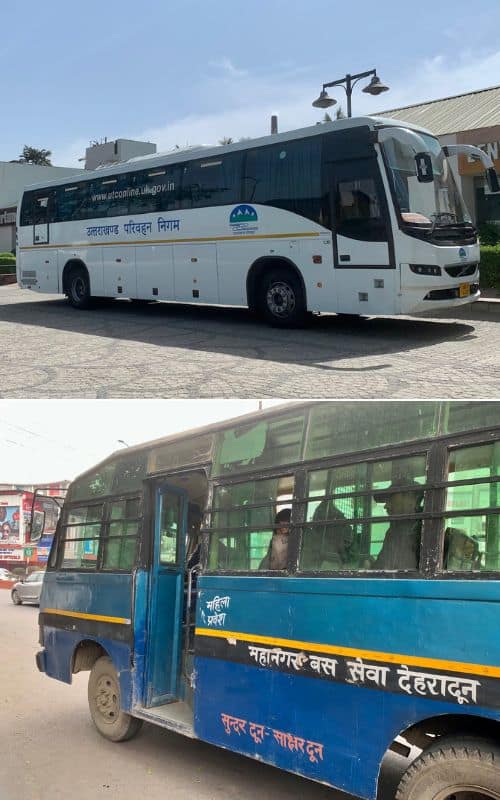
Regional and city buses
Regional buses are a great option, too. For example, to go one hour from Dehradun (capital of Uttarakhand) one mile up a mountain to Mussoorie (famous honeymoon spot), cost only $1!
City buses buses are another great way to get around… if you can figure out the schedule.
Using Dehradun again as an example: bus numbers and routes were in Hindi, and Google maps didn’t have transit routes – even though it’s a large capital city of that state. All part of the adventure.
However, cities like Kolkata and Delhi have bus systems that are relatively easy to understand, but they’re always really crowded. Google maps usually work well in mega cities for public transit.
Development like new metro lines in mega cities like Chennai and Delhi will alter public transit routes apps like Google Maps will show you – so just be aware of that, and be ready to hop off a bus at the last minute!
Pedestrians BEWARE
Indian traffic is more wild and congested than Thailand or Vietnam — by far! And: it’s more dangerous, as you know from the introduction to this guide to slow travel in India.
There are so many people — and cows/goats/pigs/dogs/you name it — on the roads.
If you are trying to cross a two-lane road and you only look one direction before you cross the first lane, you could get run over by a moto driving the wrong way!
Or you could be hit by someone pushing a cart totally loaded with anything from plastic containers to hundreds of pounds of onions.
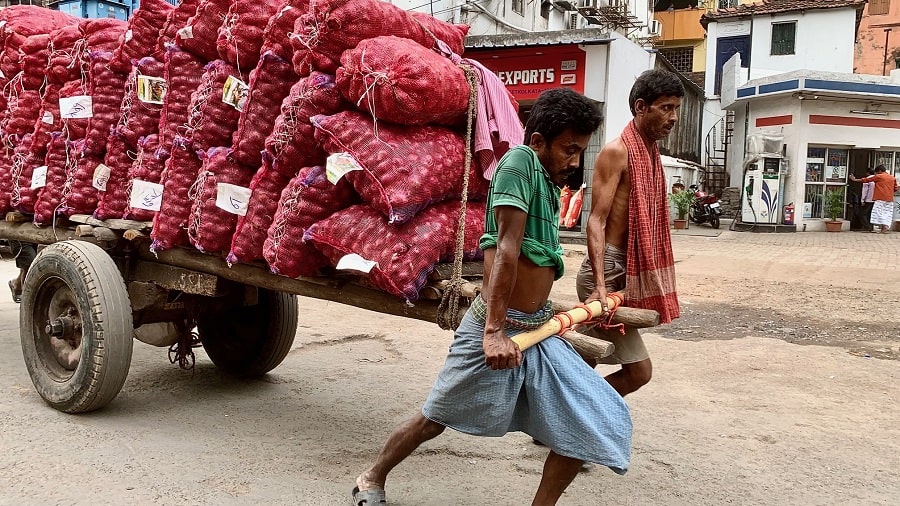
Look both ways, always, at every crossing on every road in every city.
We’ve seen motos scrape cars and keep going. We’ve seen school buses and slow tractors on highways — going the wrong way. We’ve seen copulating cows block traffic forever. You name it – we’ve seen it.
And horns are incessant shrill alarms that never end. These horns say: ‘I’m coming and I’m not gonna stop so watch out for me!’ With so many horns, after a few months, you tune them out, which defeats the purpose to alert others.
We would never rent a car or scooter in India. Not in the cities, and not in the countryside, because anything goes there, too. But maybe you’re more adventurous than us.
Remember: 422 people die every day in India in traffic crashes, mostly from speed. The following pictures are from a highway on three-hour Uber trip.
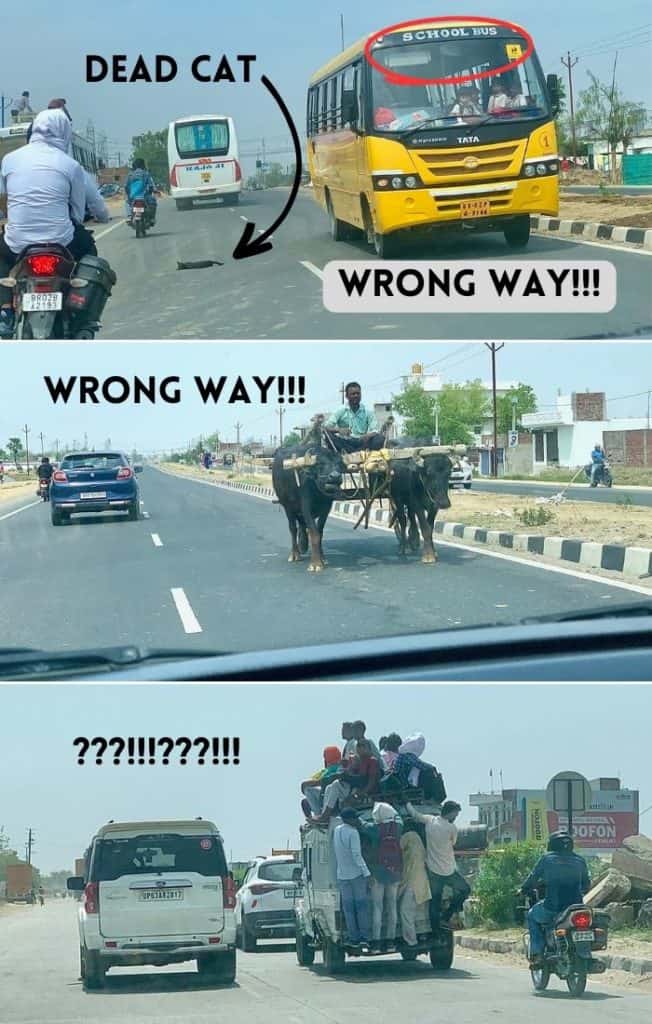
Cars & rickshaws (tuktuks)
India has Uber, and taxis and rickshaws are plentiful. But there are a few tricks drivers try to pull on tourists.
But if you’re reading this guide, you’re more likely a savvy slow traveler, not a tourist. So you will know not to stand for these tricks.
Uber
Uber works, kind of. Say a driver accepts your request. He can see where you are going. But then he will call, speaking broken English to ask where you are going. That’s not allowed, but they do it anyway.
The driver might ask for a cash payment, even if you’ve specified you will pay by credit card. That’s not allowed, either, but drivers do it anyway. (Uber is a foreign app, and so foreign cards are no problem.)
Why do they do this? They cannot see where you are going until they accept your ride request. Then when they see you are a foreigner, and you aren’t going a long distance so it’s a small fare, they decide the short trip isn’t worth the hassle.
Can’t really say we blame them. Would you want to drive two miles in 20 minutes of crazy traffic for less than $2?
Taxis
Taxi car drivers will try to get the biggest fare possible, of course. We rarely used these.
To see what the fare really should be, we used the Uber app to check how much it would cost from Point A to Point B, and used that as a starting point to haggle for a fair fare.
You will save money if you are willing to wait in long lines at pre-paid taxi stands. If you are obviously a foreigner, drivers will approach you and make offers to take you ‘right now’ so you don’t have to wait in line. Their asking price is likely to be four times the going rate.
A price example: we waited for an hour in the pre-paid taxi line for a Hinduastan cab in Kolkata at the train station. We refused all drivers who approached us to see what the official fare would be to go all the way across town. The official rate: $2.50. We tipped well.
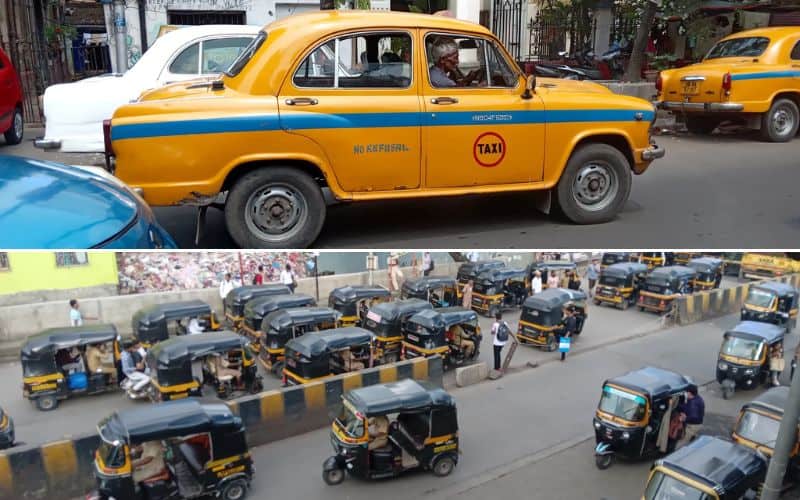
Rickshaws
Rickshaws (tuktuks) look different from city to city. Pictured above is what they look like in Mumbai. The Mumbai rickshaws are the only ones that consistently used meters in the many states, cities, and countrysides we visited.
In other places without meter use, the drivers play the racket of fare jacking on tourists.
These guys have a tough job. They’re outside in all types weather, in crazy traffic, breathing in exhaust all day. It’s not surprising they try to extract more money from foreigners.
Most places have ‘shared’ tuktuks/rickshaws that cost next to nothing to go across town. Just ask locals for the ‘shared’ stand, or watch to see what locals do from the side of the road.
Just watch out for cows, their dung, and wedding reception parties that might pop up on busy roads.
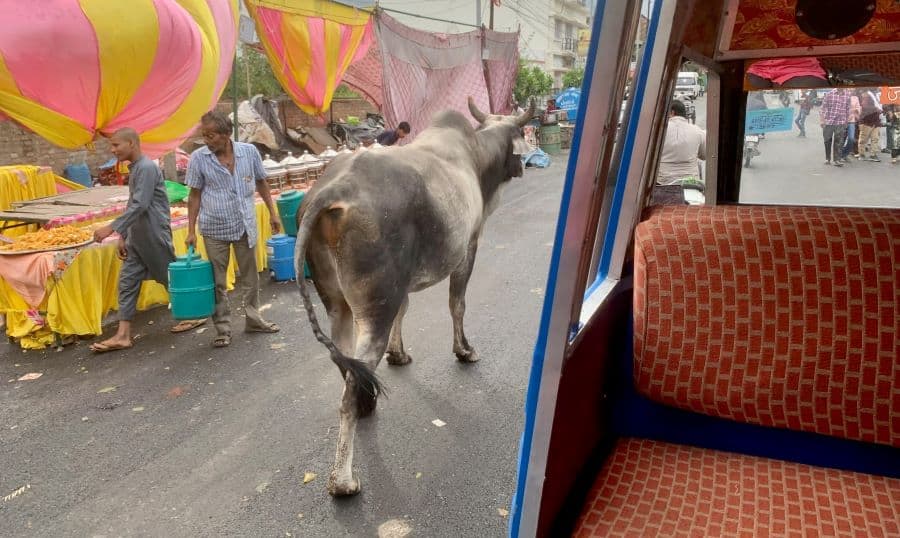
Domestic flights during slow travel in India
Slow travel in India means you probably won’t fly often, if at all. Slow travel by nature is flying as little as possible, but it might be necessary. We flew once. We flew with budget carrier IndiGo Airlines to go from Chennai to New Delhi.
Flight cost example
Our IndiGo Airlines tickets cost $93 per person in early 2023.
Each ticket included one free checked bag at 15 kilos, and our carry-on bags were under seven kilos each.
The flight was three hours, on time, and overall a pleasant experience. There was a slight hiccup at airport security. Drones are not allowed inside the cabin on planes in India, unlike other countries. So we had to box it and check it.
See our detailed review of IndiGo Airlines.
Housing
In eight months, we booked 16 different Airbnb units, a few units from booking.com, and a couple of hotels.
We almost always use Airbnb for month-long stays. However, this time, we stayed in some places only a week or two. For those shorter stays, we found some better places and deals on booking.com
Airbnb vs. booking.com
It is possible to get a substantial discount for a month-long stay on Airbnb. However, we used booking.com a few times because some of our Indian tour put us in a location only a week or two. In those locations, like Jodhpur and Pushkar, we stayed in guesthouses or hotels with common seating areas.
Three month-long rentals from Airbnb saved us money: Jaipur (video tour), Chennai (video tour), and Rishikesh (the first time) (video tour is from our second, longer stay).
Rent apartments with these features
When renting an apartment for a month as a slow traveler in India, these three features will help you relax a little more from the ‘crazy’ outside.
- Reverse osmosis machine
- Inverter
- Furniture
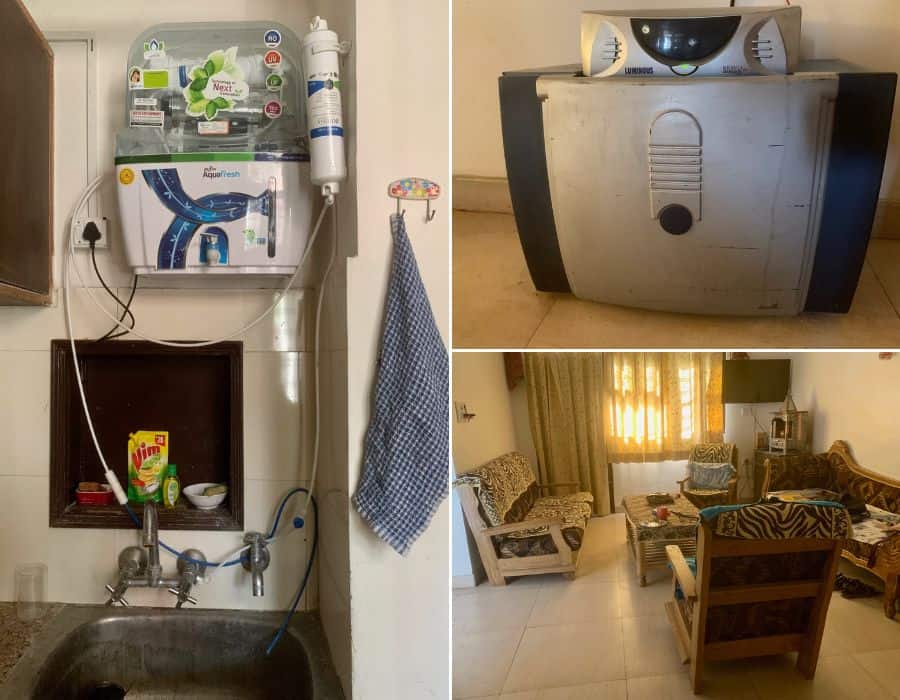
Reverse osmosis machines
Reverse osmosis machines are commonly called “RO machines.” Most ‘middle-class’ rentals have them.
RO machines turn tap water into safe drinking water. Some tourists prefer to keep using bottled water anyway, but that’s a lot of plastic! We never got sick from drinking water in rentals.
In shorter-term guesthouse and hotel stays, the business usually will have a giant jug of drinking water where you can refill your bottle. These jugs have water from larger, industrial RO machines.
Inverter
These contraptions are called simply “inverters” in India, though it’s really the accompanying battery that technically provides the power.
An inverter transforms electricity and when stored in a battery, you can still have a little juice for a light and a fan when the power cuts out.
Frequent power outages happen in many parts of India. Thankfully, every place we rented had an inverter.
Furniture
Ok, this might seem silly to Westerners, monthly rentals under $700 a month don’t always include comfortable sitting furniture. In fact, couches and chairs are not standard features at this price point.
Why is that? We’re not sure. It could be that India has fewer middle class property owners who are able to provide these furnishings.
As with everything in India: book accommodations as early as possible. Those Airbnb calendars fill up quick, and that could prevent you from getting a good deal on a month-long stay.
Food
For slow travelers, eating out is cheaper than eating in. For a large Indian family, that’s not true. But you can enjoy a meal of equal value to eating at home by the time you buy ingredients and put in preparation time.
Strangers might invite you into their homes for tea and snacks or meals. This is one of the beautiful things about India. Just imagine that happening in America — NOT!
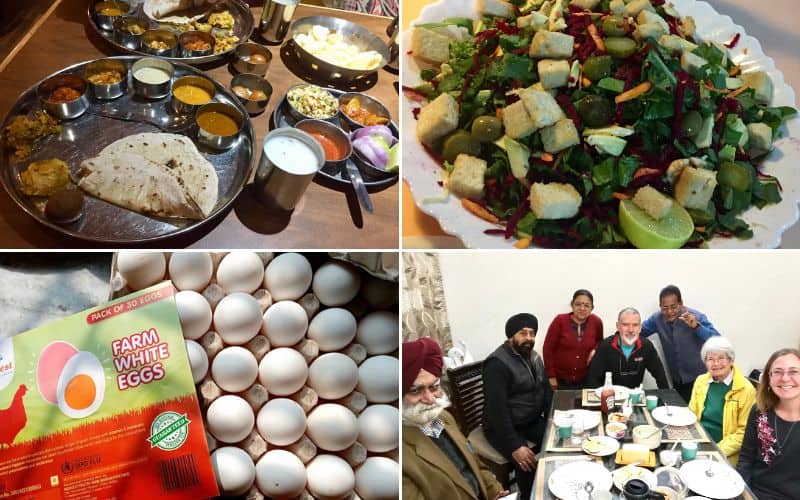
Restaurants
Choices are endless. Restaurants are everywhere. We tend to use the reviews on Google maps as a guide, and we go where the locals eat.
We tip 10 to 20 percent, depending on the service.
Tipping is rare and never expected in places without tourists, but we do it anyway.
Many restaurants will have typical Indian fare, and then also Chinese-style dishes and sometimes Middle Eastern plates – like falafel and hummus.
Prices run the gamut. Small eateries will serve a large tasty platter of Indian thali for as little as 150 rupees ($1.80). Or you dine in a restaurant a step up for well under $5 a plate, or go even higher at a fancy restaurant for more money.
Meat & alcohol
The majority of restaurants are vegetarian around holy bodies of water as in Rishikesh, Bundi, and Pushkar.
Also, restaurants near holy Hindu places do not serve alcohol. At these places, you probably have to hire a rickshaw to drive you little bit ‘out of town’ to the nearest beer store. In contrast, alcohol stores in cities are common.
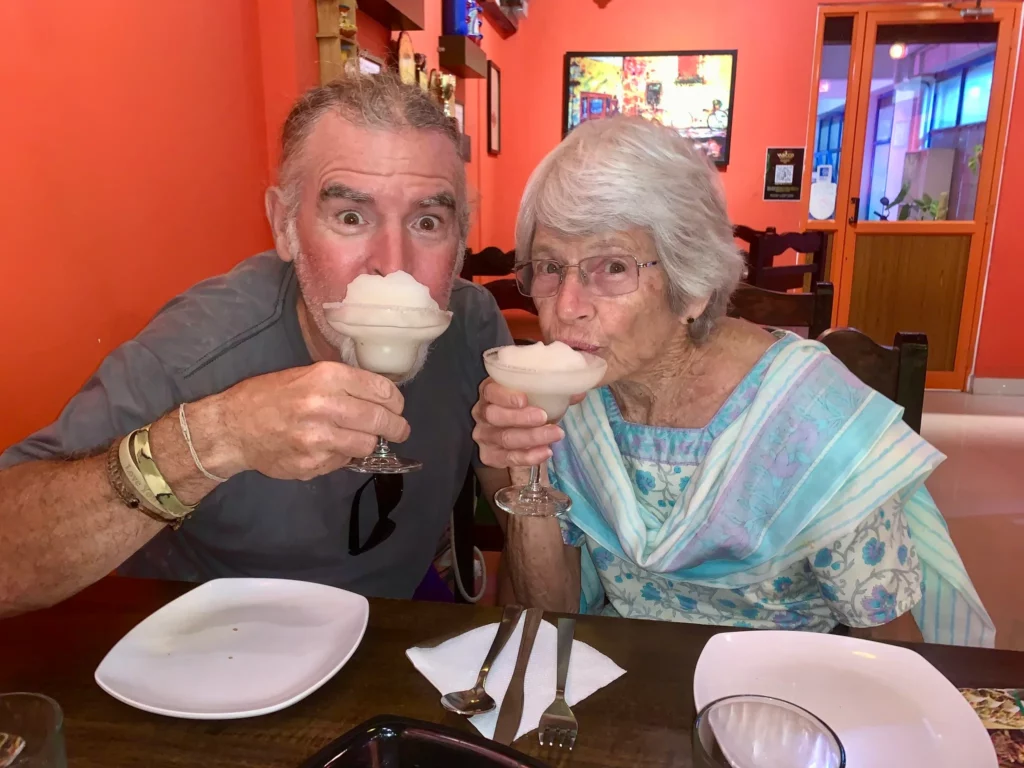
Many restaurants in cities will serve chicken and other meat — except beef (cows are holy). Menus are divided into ‘veg’ and ‘non-veg’ sections.
Also keep in mind: tenants and boarding guests are not allowed to bring meat or alcohol into many rental units near holy places. Read the rules when you book your place.
Muslim neighborhoods have butchers that sell chicken, fish, and buffalo, but never cow.
Price example: two average-sized chicken breasts fillets cost a ridiculously low $2 in a section of Jaipur where tourists do not usually frequent.
Beware: these types of places don’t use glass-encased coolers and stainless steal countertops. The birds were killed when ordered and the butcher chopped the fillets on a tree stump used as a cutting board.
Groceries
Big chain grocery stores are not too common. A large city will surely have a few, and you might have to travel a distance to get to one. These have the largest selection, but not really the best prices because manufacturers put the consumer price onto the packaging.
India is filled with mom-and-pop shops that sell groceries. You can find basics at these small shops — shops that used to be common in the USA before the 1980s.
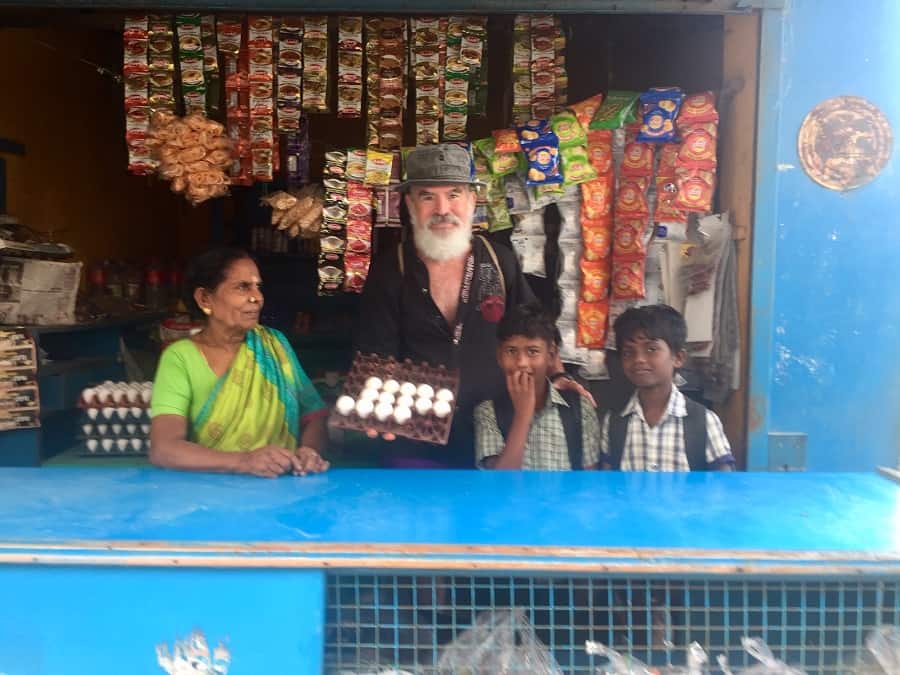
Prices are listed on packaging by manufacturers for everything from bags of nuts to containers of dahi (similar to yogurt).
Packaged food price examples from 2024
- Tetley black tea bags, 100 count: 210 rupees ($2.55)
- Chai organic tea bags, 25 count: 194 rupees ($2.35)
- Devan’s French roast coffee (Indian brand), 500 grams: 663 rupees ($8.05)*
- Green raisins (Good Life brand at Smart Point grocery store), 500 grams: 149 rupees ($1.80)
- Salted peanuts, 200 grams: 54 rupees ($0.65)
- Cashews, halves, 500 grams: 349 rupees ($4.25)
- Paneer (cheese, Mother Dairy brand), 200 grams: 88 rupees ($1.05)
- Box milk (ultra-processed), 1 liter: 72 rupees ($0.90)
- Dahi, 370 grams: 30 rupees ($0.30)
- Eggs, tray of 30 (prices vary a little in different parts of India): 255 rupees ($3.10)
*Kudos to Devan’s! The first coffee packaging we have seen with a warning about what the climate crisis is doing to coffee. That warning is also on their website.
Produce
Vegetarian India is blessed with an abundance of produce. Buy your veggies at small stands, shops, and roadside carts. In some neighborhoods, men push carts door to door; in others, they set the cart at a popular thoroughfare. Venders’ children often work at stands and shops.
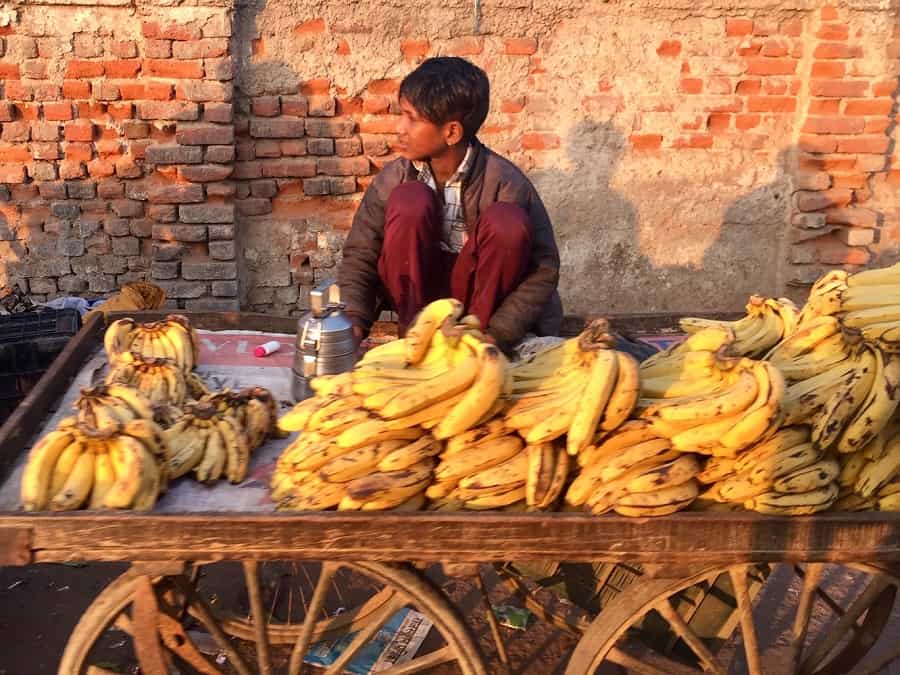
We marveled at how cheap produce was. Everything is by weight, but to give you and idea on how cheap things are, you can get four giant green peppers, four large cucumbers, six red onions, two apples, eight bananas — and more — for under $2.
See more price examples for produce and packaged foods in our post Food Prices in India for slow travelers.
Medical
This would not be an effective ‘how to slow travel in India’ guide if we didn’t cover medical facility options. Life happens, accidents happen, root canals happen, and mosquitoes suck.
Here we will give you our personal experiences so you have an idea on treatment options and prices for health care without travel health insurance. (We don’t use travel health insurance.)
Health care: personal examples
Theo needed root canal twice in different cities – Chennai and Rishikesh. First time cost: $287.50. Read more on the Chennai root canal in Theo’s post. The second root canal cost: $247.50.
He also contracted the dengue virus in Jaipur and was really sick. Thankfully, he didn’t need hospitalization — but it was close! A previous post has more info on dengue in India, and Theo wrote a post about his experience with the mosquito-borne virus. Total cost for dengue blood tests, medicines, thermometer: $77.50.
Theo had a cyst lasered off his forehead by a dermatologist, who also checked us both over for skin cancer (none found!). Total cost: $43.
In another city, he also had warts removed from his elbow. Cost: $18.75.
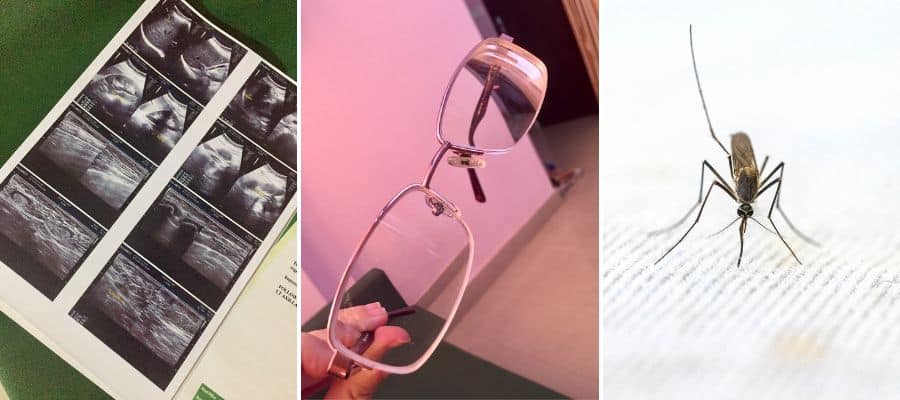
More examples
A neck MRI for Theo cost the equivalent of $35 in Chennai. Granted, the machine was a few years old and the clinic offered a discount for a nighttime test. Otherwise it would have been about $50.
I had an emergency root canal in Rishikesh during our first month-long stay. I went to a dental hospital and college, so the price was considerably lower than Theo’s two rounds. Cost: $12. Yep, just $12. (See an article on this emergency root canal.)
I bought prescription eyeglasses in India. They are Crizal trifocal progressive lenses, with chromatic coating. Total cost: $121.50!
That’s a mind-blowing deal – the best on our travels — by far! It was so good, that I bought a second pair without the chromatic feature. Total cost second pair: $100. Mind blowing! (See an article on buying prescription eyeglasses in India.)
Private and public hospitals
Twice in India, I saw urologists about symptoms similar to a urinary tract infection. Once was at the private Apollo Hospital chain location in Kolkata, and once at AIIMS Hospital in Rishikesh.
At private Apollo Hospital I had three tests and two doctor consultations. Cost: $117.
At public AIIMS Hospital, I had five tests and three doctor consultations. Cost: $12. (Yes, $12.)
Both the private and public hospitals on opposite ends of the country were plagued by the same problem: so many patients!
The private Apollo Hospital experience took all afternoon one day, and a few more hours on a second visit.
At public AIIMS, my tests and consultations lasted several days over two weeks, and I waited in really long lines.
People come from all over the countryside in the region to see doctors at AIIMS. They camp out to be first in the morning lines. They even do their laundry while they wait. Organized chaos. India.
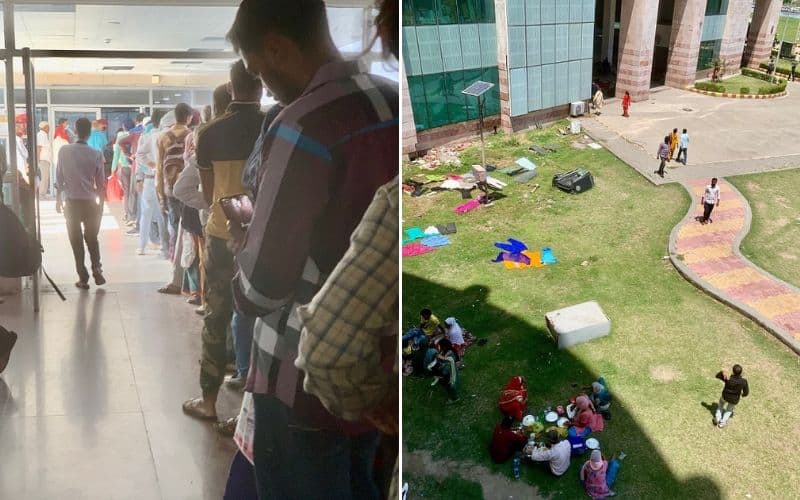
So why did I put myself through the public hospital experience in the world’s most populated country? Because there were not any other options in relatively small Rishikesh. I would have had to make an overnight trip to a larger city if I hadn’t gone to AIIMS.
Additionally, every local person I asked in Rishikesh told me to go to AIIMS. Its doctors and professors have high ratings. Its lines, not so much.
Medical takeaways for slow travel in India
India has talented medical professionals, but she needs more to meet the needs of a gigantic population.
While the AIIMS experience overall was fair, I would NOT recommend a public hospital in India for anyone who is new to getting medical care abroad, or anyone short on patience.
Also, even though it was recommended I go to the public hospital, it felt like I shouldn’t have been there. Some people looked at me with obvious disdain, which made me uncomfortable. I’ve never felt that way in any other foreign medical setting.
Our experiences in private doctors’ offices were much less cumbersome than either hospital.
Overall, hospitals in Malaysia – so far in my experience – are much better suited for ‘medical’ tourism, even though Apollo had an international patient department.
Afraid of health care overseas? Don’t be!
Our special guide on global health care shows you:
- 7 easy steps to find the right doctors and hospitals
- Specific price examples for various medical services
- What to know about medical visas
- And more!
We go without travel health insurance, but many of the principles apply to those with coverage.
Further reading on slow travel in India
You have plenty to discover on your own about India, such as: who are those men in saffron?; why do all Indians ‘bobble’ their heads – and what does it mean?
Hopefully this guide lays out the basics for you find answers to India’s mysteries and you set out explore this strange and beautiful foreign land.
For further reading about specific locations and our personal experiences in Mother India, please visit our collection page for articles on slow travel in India.
Namaste 🙏
Thanks for reading, “How to slow travel in India — 2024 edition.”
Recent blog posts:

Boycotts of American brands & uncomfortable questions for us travelers
Ellen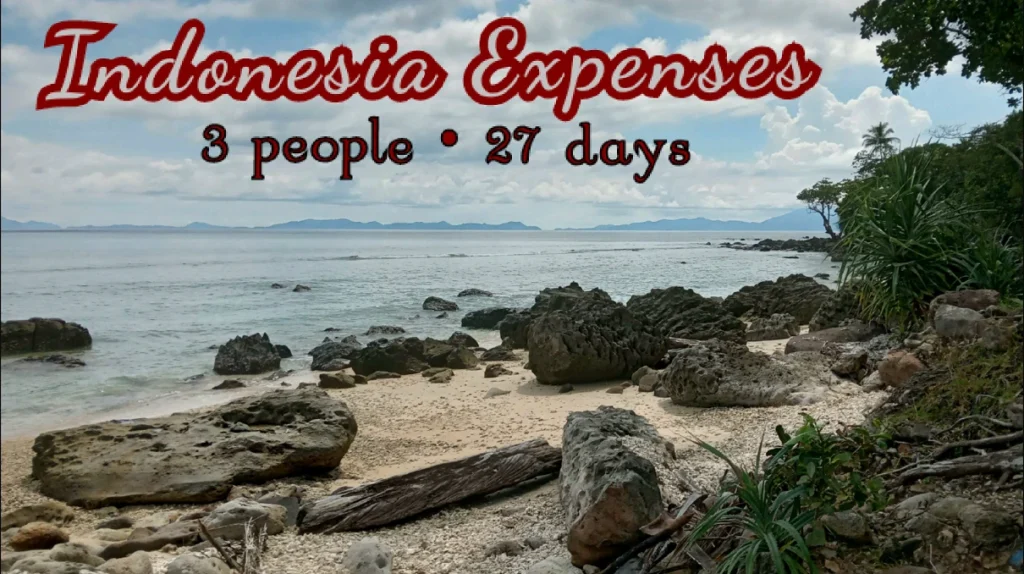
Indonesia expenses: Sumatra spending summary
Theo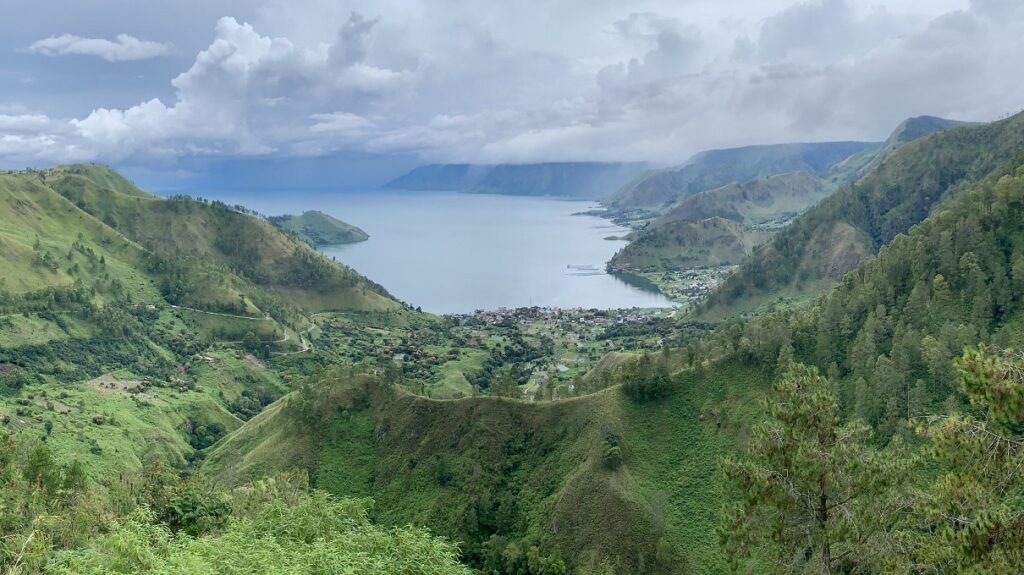
Escape from reality: 5 Breathtaking views on a budget in Sumatra
Ellen
Extraordinary two-day orangutan trek in Sumatra
Ellen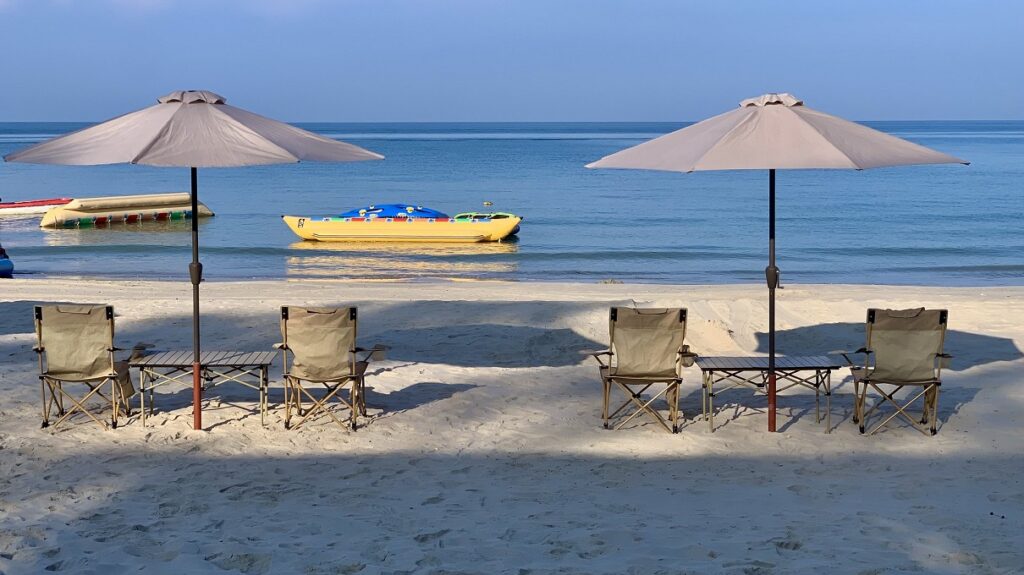
Port Dickson is quiet and peaceful for budget slow travelers
Ellen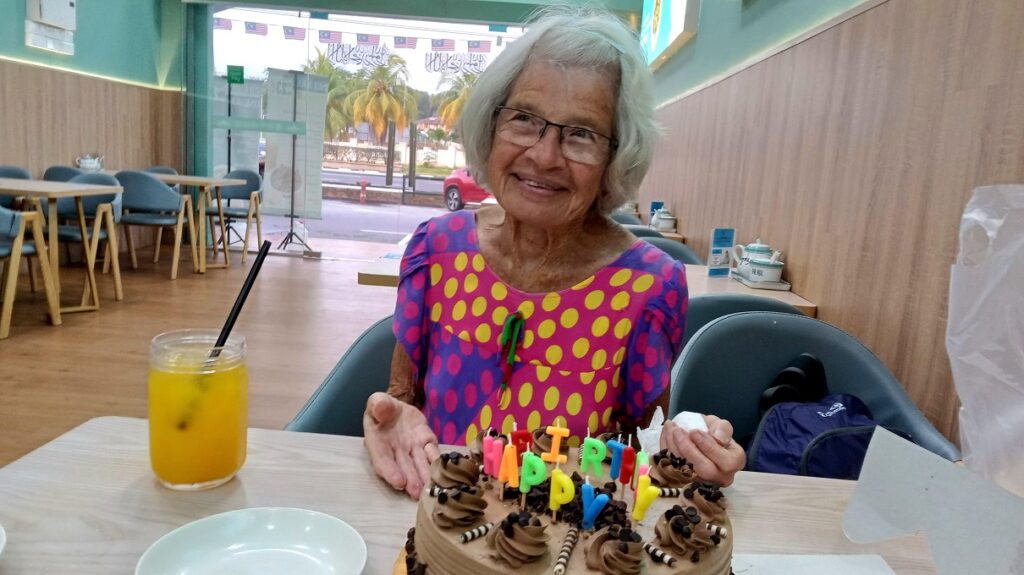
“Happy Birthday, Mom!”
Theo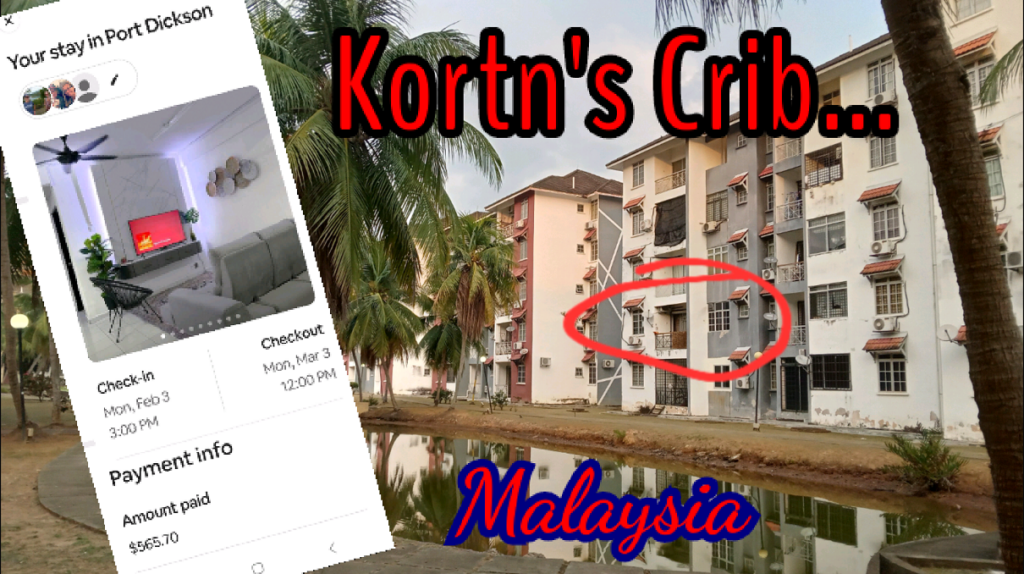
Kortn’s Crib: Video tour of our Airbnb in Port Dickson, Malaysia
Theo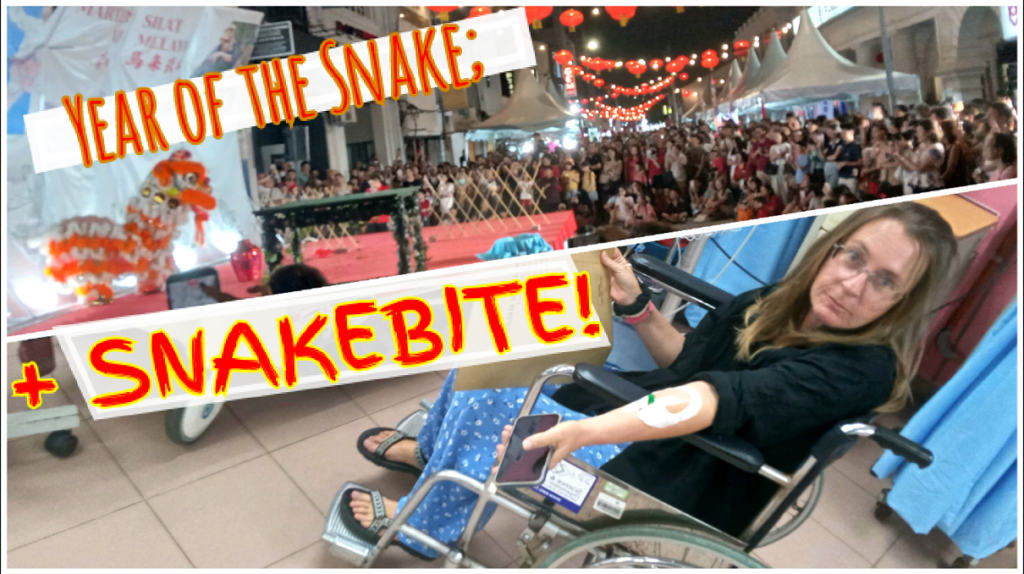
2025 – Year of the Snake bite
Theo
Affordable grocery prices in East Asia
Theo
Mom meets us in Malaysia
Theo
Commentary: Yellow Journalism & Global North denial
Ellen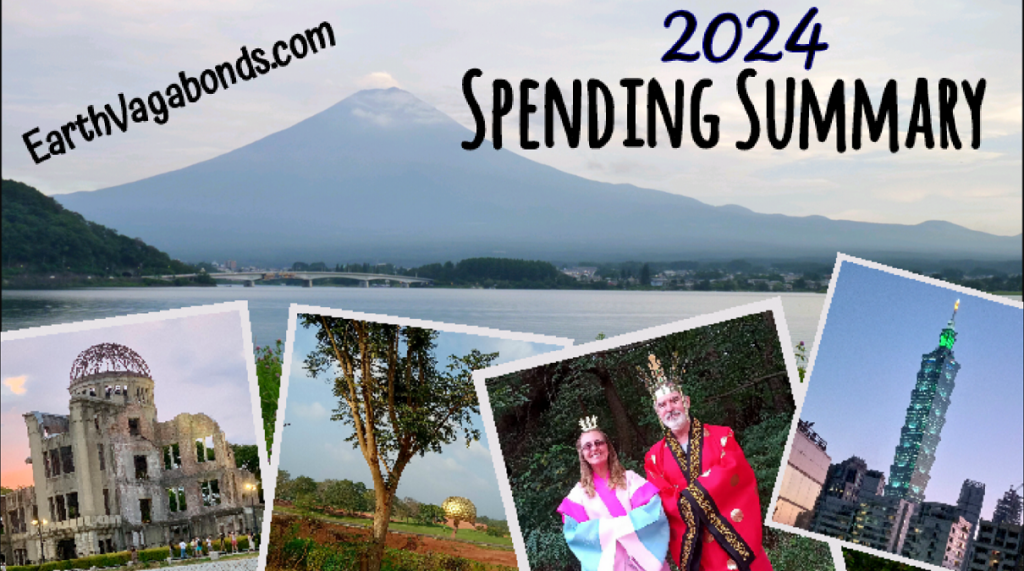
2024 Total expenses for budget slow travel around the world
Theo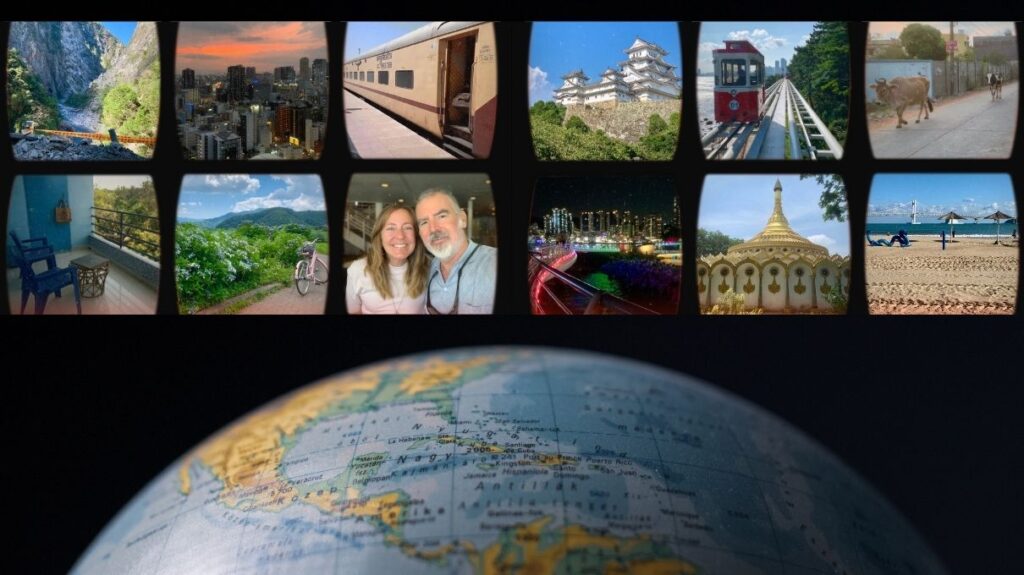
Budget slow travel for under $2,500 a month in 2025
Ellen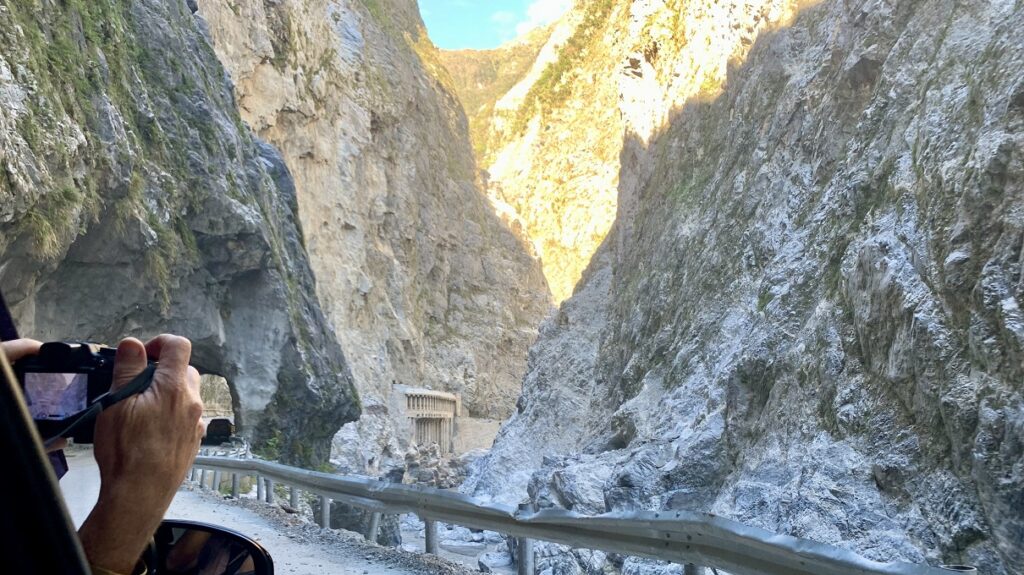
Earthquake tour in Taroko – the world’s largest marble gorge
Ellen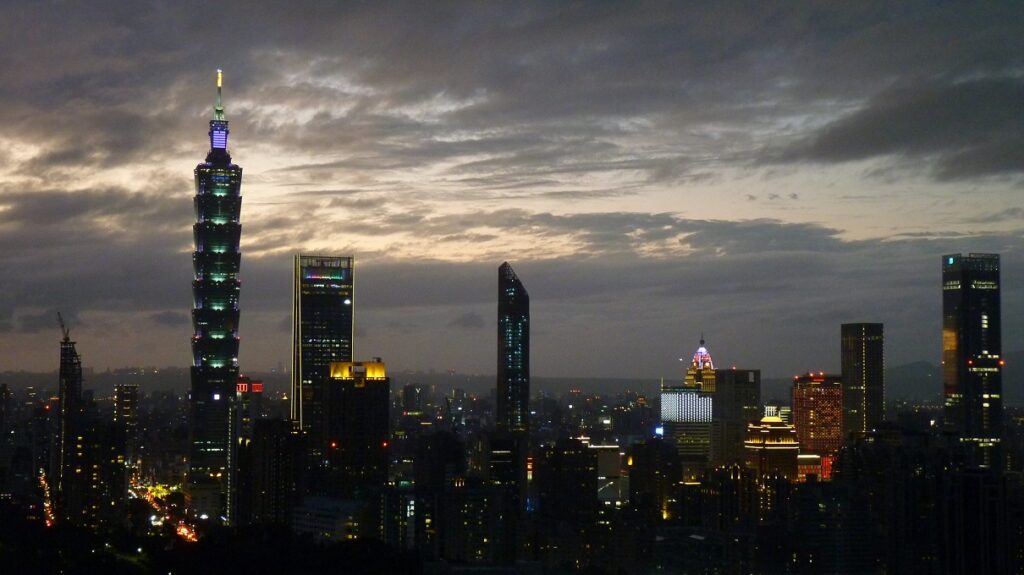
Health care and Greatest hits in Taipei
Ellen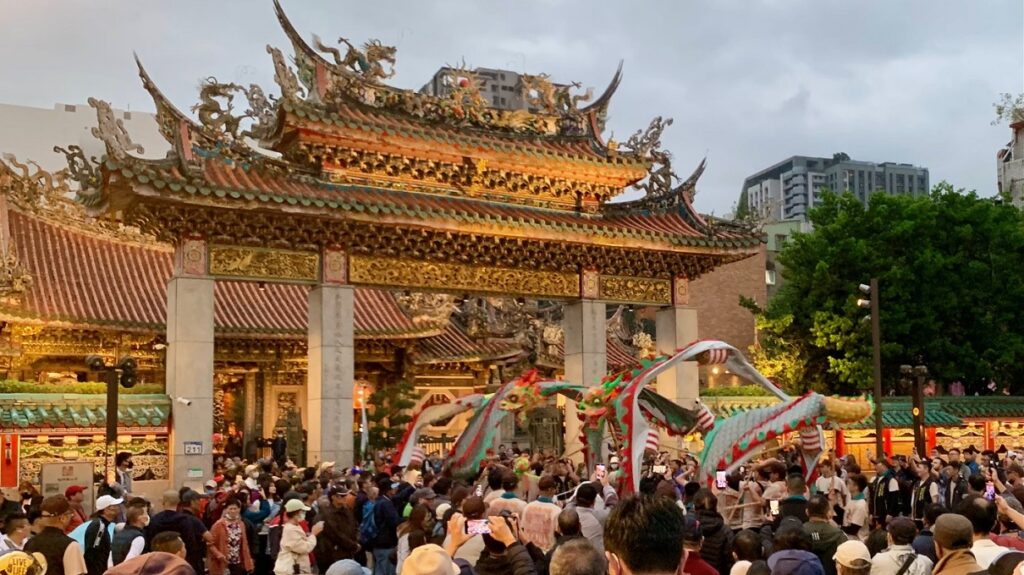
First impressions of Taipei for budget slow travel in early retirement
Ellen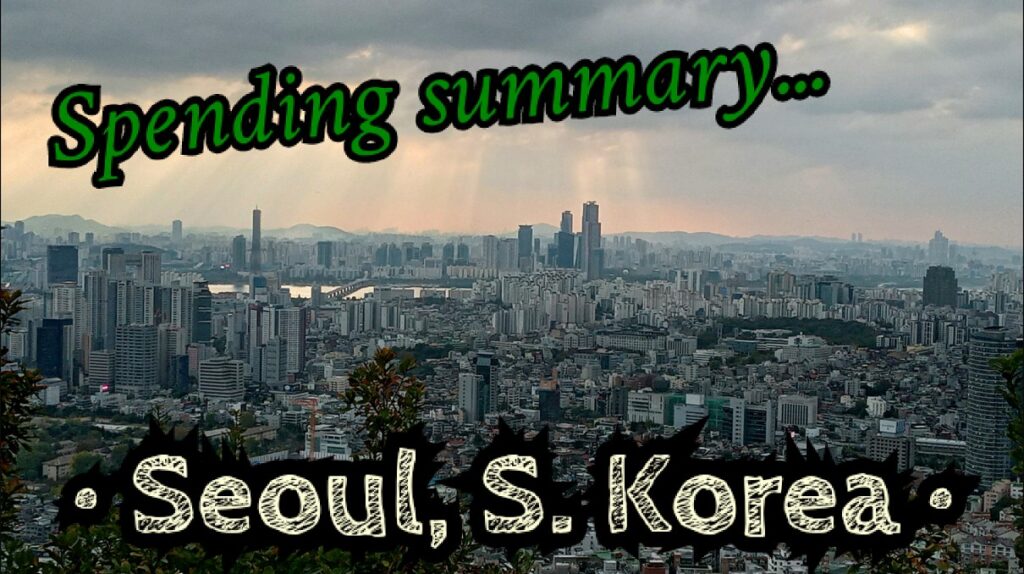

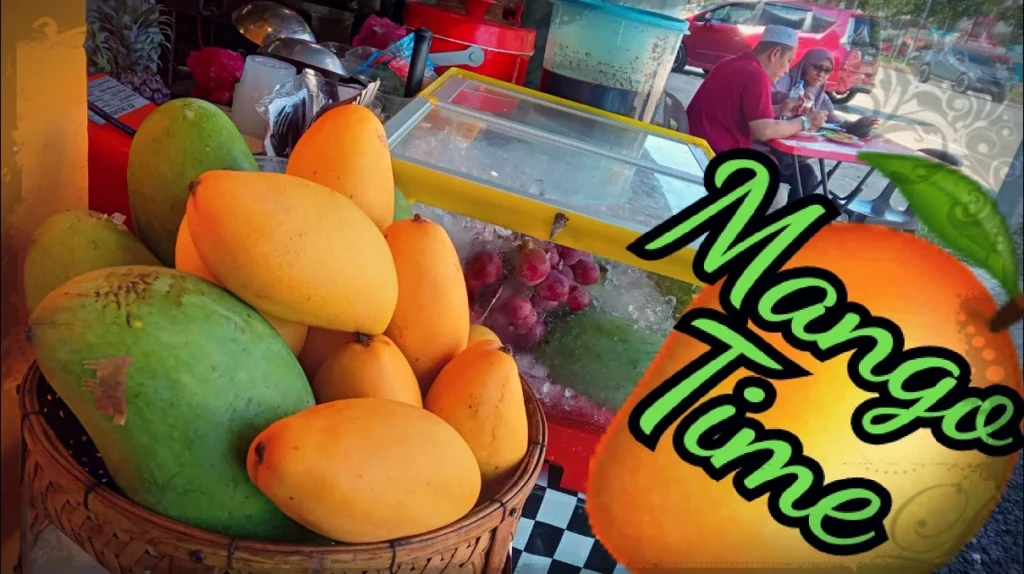



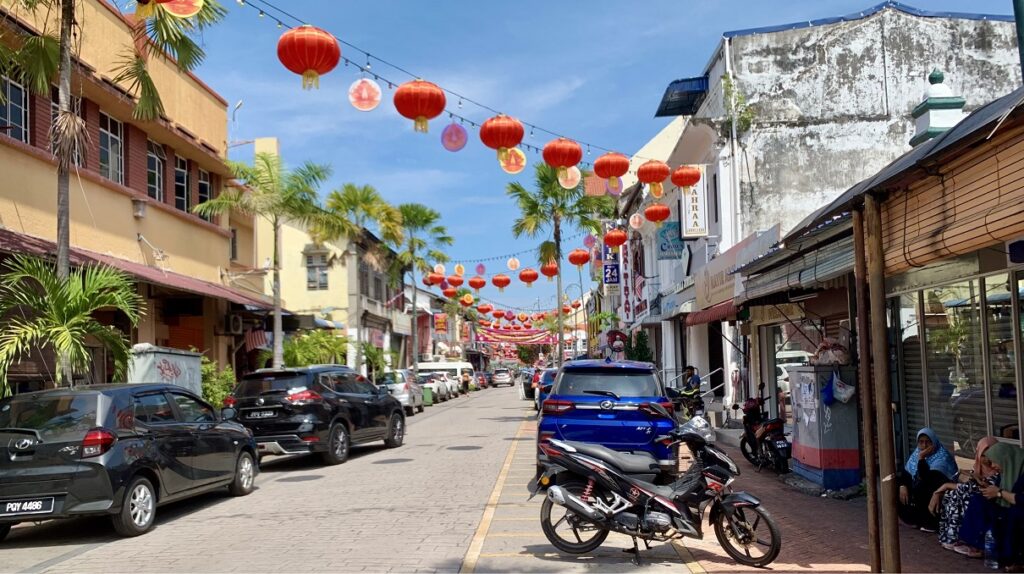

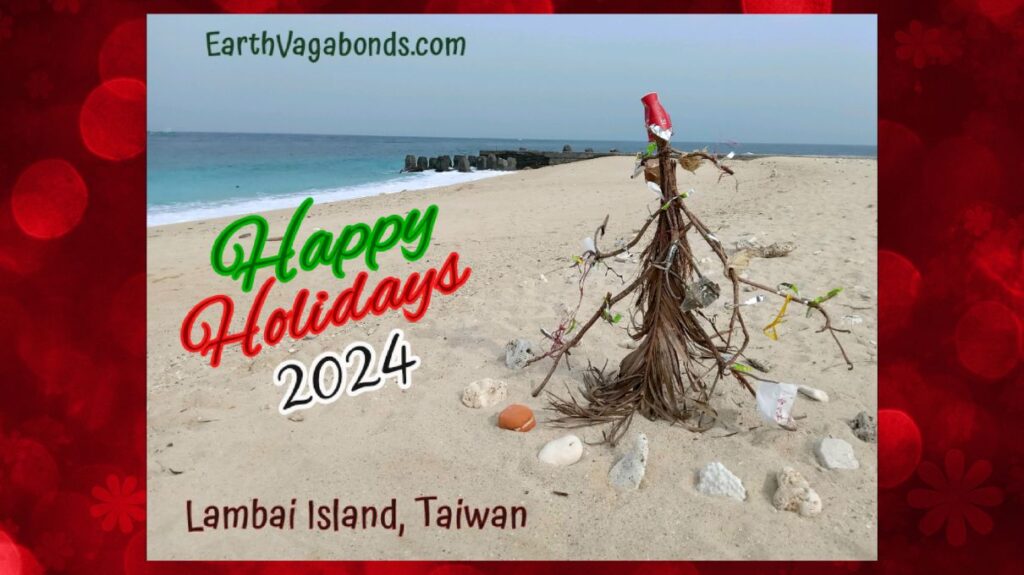





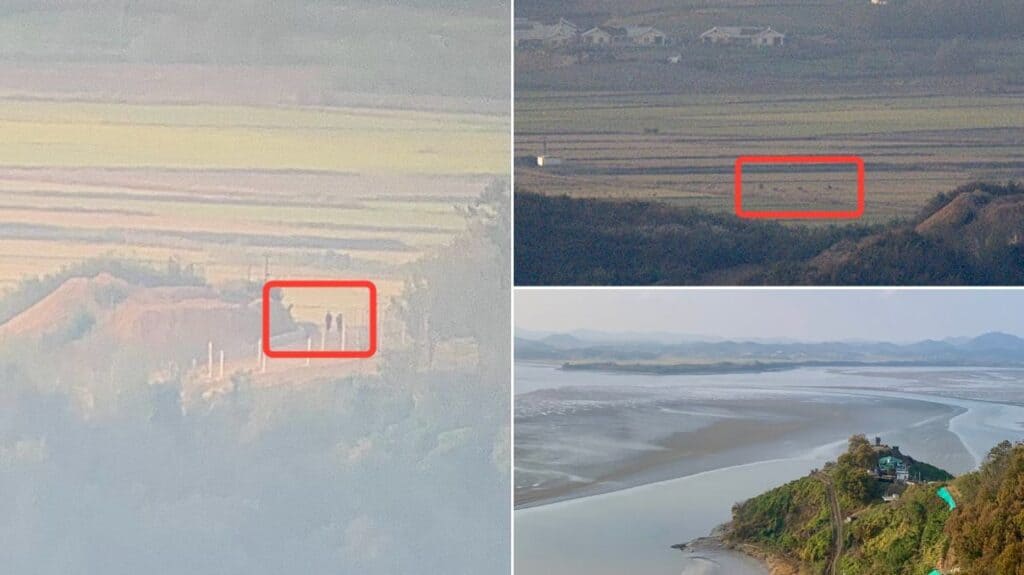
Very nice report on India.
Thanks,
Tom & Paula